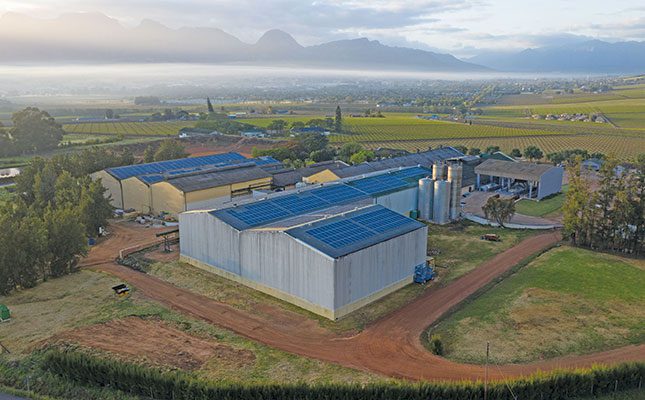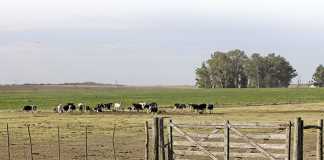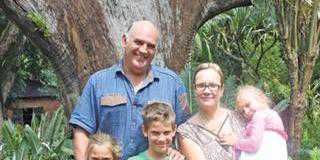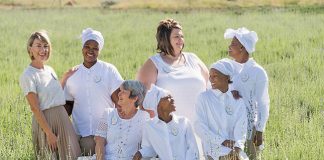
Photo: Supplied
Why did you start Sun Exchange?
I came to South Africa from England to work as a solar financial adviser in 2014. At the time, I was struck by the poor adoption of solar technology, which I later realised was because of the absence of subsidies, government incentives and funding solutions. To help solve the situation, I launched Sun Exchange in 2015.
How does it work?
Sun Exchange is a crowd-based solar leasing platform, where people and businesses around the world unite to enable solar power for schools, non-profit organisations, farms and other small-to-medium sized organisations in South Africa.
A crowd sale of solar cells for each unique solar project takes place through thesunexchange.com, where anyone, anywhere can buy cells online for a limited time.
The cells are leased to a solar project once all the cells for that project have been purchased. Solar cell owners then generate a passive income from the solar power they produce, while the organisations they power gain access to simple, affordable, reliable and clean energy.
How has the business grown since 2015?
To date, our global community of members, which includes corporates and individuals, has funded 75 solar projects to the value of R175 million. This equates to two million solar cells, or 14 000 whole solar panels, with a combined output of about 7,8MW. Our 10 most recent projects have included battery storage.
Eskom estimates that 1MW of solar can meet the annual energy needs of around 650 middle-income homes. Sun Exchange’s 7,8MW roll-out of clean electricity therefore meets the energy needs of more than 5 000 homes.
In terms of our environmental impact, we have reduced carbon emissions by over 19 000t, equivalent to 74 million kilometres driven in a normal car, 297 000 seedlings grown for 10 years, or 682 000 incandescent light bulbs switched to LED.
How do you raise the funding?
Our community has grown to tens of thousands of individuals and businesses across more than 180 countries, but mostly from South Africa, the US, the UK, Europe and Australia.
In many instances, the stakeholders of our energy consumers, such as staff members, customers and employees, like to be involved in the project, and are able to do so through purchasing solar cells.
We also work with corporate funders who either buy solar cells or donate capital to projects. Over the past few years, we’ve seen growing interest from businesses to buy or donate solar cells and we’ve had over 100 institutions participate.
Corporate buyers from around the world are now also using Sun Exchange as a convenient and reputable way of deploying environmental, social, governance and sustainability budgets to unlock solar power for farms and charities. For instance, global reinsurer Hannover Re recently made a capital donation of R1 million to the Cape Town Society for the Blind’s solar project.
The benefits for corporate members or funders can include, depending on whether they purchase or donate the cells: solar energy revenue, clean energy tax incentives, advanced corporate social responsibility agendas and profiles, traceable and tangible impact reporting on sustainability, and carbon reductions.
What are the members looking for?
Our members form part of a global movement of people who want to create a more sustainable future for the planet. In other words, they want to make investments with positive social and environmental spin-offs.
When members buy and lease solar cells through Sun Exchange, they provide clean, affordable, reliable electricity for organisations in emerging markets, while earning money for the clean electricity their cells produce.
No matter where they are in the world, even if they don’t have the funds or the roof space for a traditional solar installation, our members can enjoy the benefits of owning solar assets. All they need is about US$5 (about R93) and an Internet connection.
How are they compensated?
They earn from the electricity their solar cells produce, paid for by the electricity consumer. This income is paid monthly into their online Sun Exchange wallet for the duration of the solar project (20 years), which is linked to the lifespan of the equipment. Earnings vary per project, but are generally equivalent to a rand-based internal rate of 10% to 12%.
Across nearly 80 projects, over 90% of rental payments to our members are distributed on time each month. Where our projects pay late, we follow a normal debtor collection process, and distribute to our members when we receive payment.
What do the beneficiaries have to do in return?
This is the beauty of the model. The energy consumers just need to pay their monthly bill, which generally is lower than what they would have paid their utility. They don’t provide any capital for the project, and Sun Exchange ensures that the project is managed, operated, maintained and insured from the installation and then all the way through its 20-year lifespan.
Who are your typical beneficiaries?
Sun Exchange powers small to medium organisations, including schools, retirement homes, farms, conservation areas, businesses, and non-profits. Our most popular projects are schools, and we’ve completed 33 of these to date.
Is the agriculture sector new ground for you?
Our focus has always been to assist sectors that are not subsidised or supported by government, plus those for which it is beneficial to commit capital to their operations rather than investing in an expensive power plant.
We started off focusing on schools, retirement homes and conservation projects, with irrigation agriculture being a natural extension to respond to the need to advance food security by promoting sustainable farming.
To date, we’ve completed solar-powered projects for eight organisations in the agriculture sector, but this is increasing exponentially, with more than 30 projects in our pipeline.
What type of agricultural projects are you looking for?
Sun Exchange focuses on financially viable high-impact projects. Farmers are South Africa’s unsung heroes; they provide food security and foreign income, and they are a significant job creator, so we want to help them get solar powered.
However, farms are often subject to the vagaries of the weather and crop performance, even more so with climate change, as well as risky currency exchange movements in international markets. It’s our challenge to offer a product that takes the seasonality of production into account while still providing reliable, clean and affordable power. As this is a new sector for us, we’re learning and improving the offering all the time.
What criteria would farmers have to comply with to participate?
We have an in-depth discussion with farmers to understand their current and future needs. This involves site visits and analyses of Eskom and diesel expenses, and limitations.
We then perform a financial due diligence on the energy consumer or contract party. We generally determine if the organisation is well run and compliant with local legislation, and assess whether it will be able to honour its ongoing solar asset lease payments.
Our technical due diligence covers the needs of the energy consumer, the physical constraints of the site, the regulatory environment of Eskom or municipal small-scale embedded generation applications, potential transformer upgrades, and tariff changes. We handle all this on behalf of the energy consumer, underlining our commitment to hassle-free solar.
Tell us more about these projects.
Our agriculture projects range from iconic wine estates to wine cellars and off-grid farms.
Boland Wine Cellar was our first agriculture sector project and has been operational since 2019.
It has almost 90 000 solar cells, funded by 1 202 members, and has generated enough electricity to avoid more than 1,5 million kilograms of carbon dioxide.
A crowd sale, hosted on our platform, for a 165kW solar plant is allowing us to power the winemaking facilities and restaurants of Groot Constantia in Cape Town, one of the oldest wine estates in the country and a major tourist destination.
The solar project has more than 40 000 solar cells connected, and 891 of our members own solar cells powering the project. It has been operating for more than seven months and is exceeding forecasts. So far, the plant has generated 127 700kWh, preventing about 131 500kg of carbon dioxide emissions.
Are these farms protected against load-shedding?
Only if they are off-grid and incorporate a battery or another backup technology.
Can energy be sold back to Eskom from these systems?
Only projects on the Eskom grid can sell surplus energy to Eskom. One Sun Exchange project doing this is Vondeling Wines. Where such a process is available, it is always implemented and built into the financial model. As and when export options become available, Sun Exchange will always take the option to sell power to the grid, as this improves the economics for the solar cell owners.
What costs are involved for businesses who make use of these opportunities?
There are no upfront costs for the solar system installation. The only costs that the business incurs is the monthly electricity bill, which will generally be lower than the usual municipal electricity bill, or, in the case of an off-grid system, lower than running diesel generators.
Sun Exchange offers full monitoring, insurance and maintenance, including the replacement of critical parts such as inverters. We strive to be what Eskom is supposed to be in terms of reliability, but at a lower cost, and green.
What is your competitive edge in the market of solar solution providers?
We strive to offer a complete solution to farmers, so that they can farm knowing that they have power when they need it. The power-purchasing model allows us to provide a system that offers more than if farmers had to buy the system on the open market, which typically works backwards from what farmers can afford or their available credit, leading in many cases to insufficient systems and, eventually, white elephants.
Given the high cost of diesel and increasing reliance on it, we aim to mitigate this expense by sizing the plant to a farm’s annual needs over a year and all seasons. We also install the correct inverters and a correctly sized storage system, ideally coupled to the Eskom grid. This makes Eskom, rather than the generator, the backup.
Of course, the generator can still be tied in after Eskom, but the idea is to eliminate the use of diesel. This will also enable the farmer to export to Eskom and bank any excess electricity for periods of high use.
In sum, we aim to put farmers in a position where they start the Sun Exchange journey the same or better off than they are currently, but with reliable and clean electricity.
Email Salomé Bronkhorst at [email protected].










